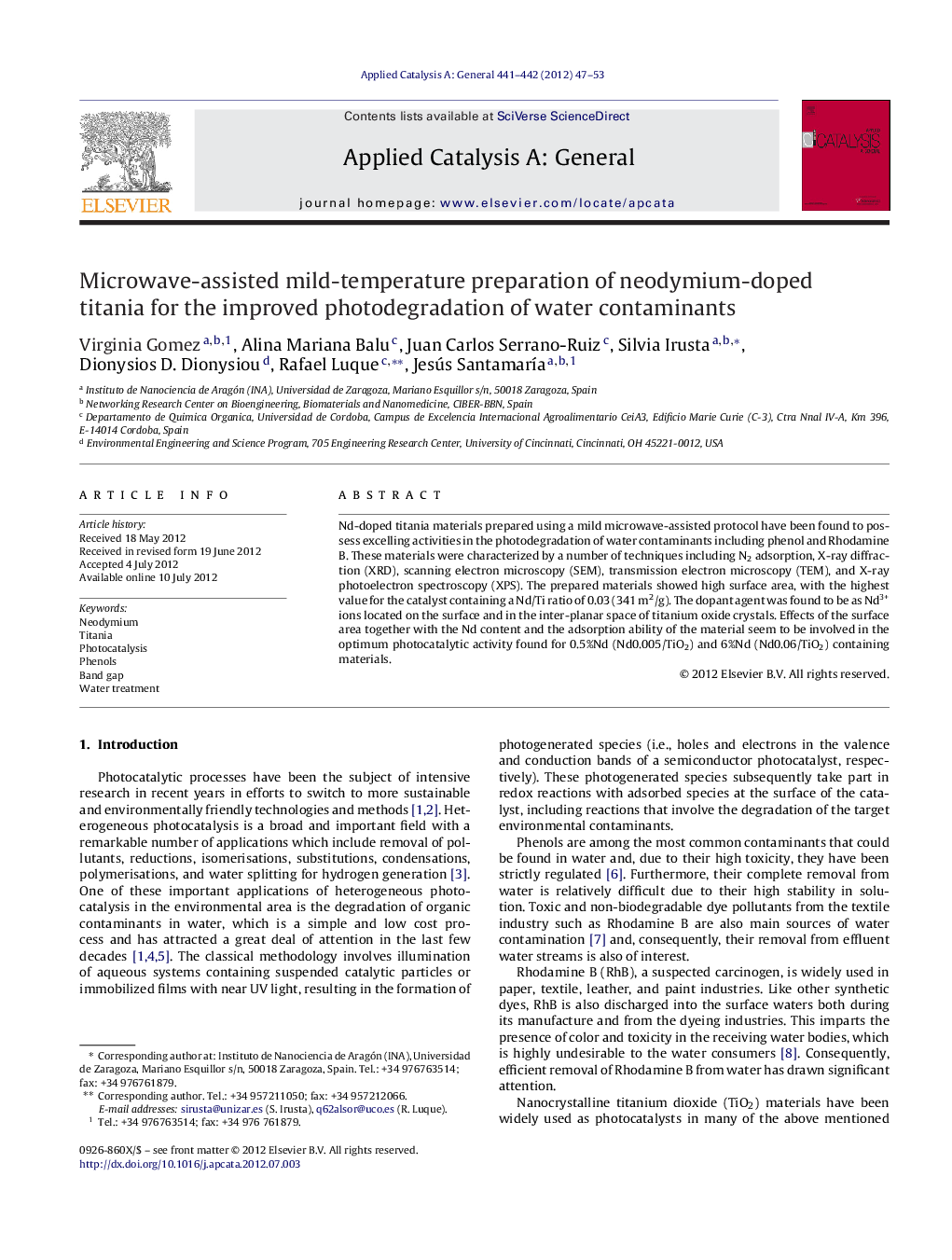| کد مقاله | کد نشریه | سال انتشار | مقاله انگلیسی | نسخه تمام متن |
|---|---|---|---|---|
| 40772 | 45865 | 2012 | 7 صفحه PDF | دانلود رایگان |

Nd-doped titania materials prepared using a mild microwave-assisted protocol have been found to possess excelling activities in the photodegradation of water contaminants including phenol and Rhodamine B. These materials were characterized by a number of techniques including N2 adsorption, X-ray diffraction (XRD), scanning electron microscopy (SEM), transmission electron microscopy (TEM), and X-ray photoelectron spectroscopy (XPS). The prepared materials showed high surface area, with the highest value for the catalyst containing a Nd/Ti ratio of 0.03 (341 m2/g). The dopant agent was found to be as Nd3+ ions located on the surface and in the inter-planar space of titanium oxide crystals. Effects of the surface area together with the Nd content and the adsorption ability of the material seem to be involved in the optimum photocatalytic activity found for 0.5%Nd (Nd0.005/TiO2) and 6%Nd (Nd0.06/TiO2) containing materials.
Figure optionsDownload high-quality image (172 K)Download as PowerPoint slideHighlights
► Nd-doped TiO2 catalysts prepared by a microwave-assisted methodology.
► This methodology leads to high surface area and homogeneous Nd dispersion on TiO2.
► Excelling photodegradation activities for phenol and Rhodamine B removal.
Journal: Applied Catalysis A: General - Volumes 441–442, 28 October 2012, Pages 47–53